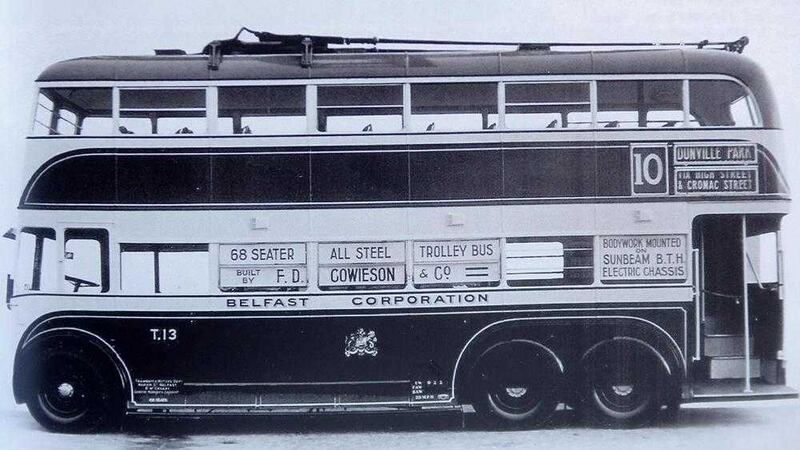A bygone era of transport in Belfast has been brought to life in a new book about the city's trolleybuses.
The book features many of the city's well-known roads and streets from the 1930s through to the 1960s that snaked across the Falls Road, Antrim Road, Cregagh and Ormeau Roads as well as cutting a swathe through the city centre, including the city hall, Royal Avenue and Donegall Street.
Written by south Belfast man Mike Maybin, the book entitled Belfast Trolleybuses, tells how the first electric tram quietly began service along the Falls Road, which proved a big hit in the 1930s.
The self confessed tram-spotter has illustrated his book with models such as the Leyland T.11, Sunbeam T.13 and the very first trolley, the AECT.2 that entered service in 1938.
The overhead cables are strange to the eye of the modern Belfast city dweller, but Mr Maybin bemoans the loss of the trolleybuses that were phased out during the 1960s when diesel became the fuel of choice for London and then Belfast.
However cities like Dublin with the Luas, Berlin and Russia still maintain their trolleybus systems.
The Glengormley stand was in Castle Place with the Dundonald stand at Donegall Square from which the Knock Road and Connswater trolleybuses also departed.
In the 1930s, the highest number trolley route was 28 (Stormont) where the tram passed right under the nose of the statue of Edward Carson.
There are also pictures of restricted zone trolleybuses operating during the second world war, air raid shelters and images of the rubble left in the wake of the Belfast Blitz of 1941.
Bellevue pleasure gardens - now Cave Hill Country Park - was also served, for the people of the smog-filled city to get fresh air.
Number 11 made its way down the Whiterock Road to the Falls, 18 serviced Fortwilliam via York Street, Castle Street and Falls Road.
"The trolleybuses were very quiet and some people got knocked down by them because they were so silent," said Mr Maybin.
"People didn't have cars then and the trolleybuses were widely used. There were no doors on them, only an open back door that you jumped up on even when the trolley was moving.
"There was a driver and a conductor who took your money and gave you a ticket, and children rode for a penny. You stood up when you wanted to get off and the conductor would ring the bell.
"There was smoking allowed on the trolleybuses, but only upstairs and of course you could bunk on and off by jumping in the back door and then jumping off when you saw the conductor coming down the stairs.
Belfast Trolleybuses is published by Trolleybooks and is priced £32. All proceeds go towards upkeep of trolleybuses at the Ulster Folk Museum.



